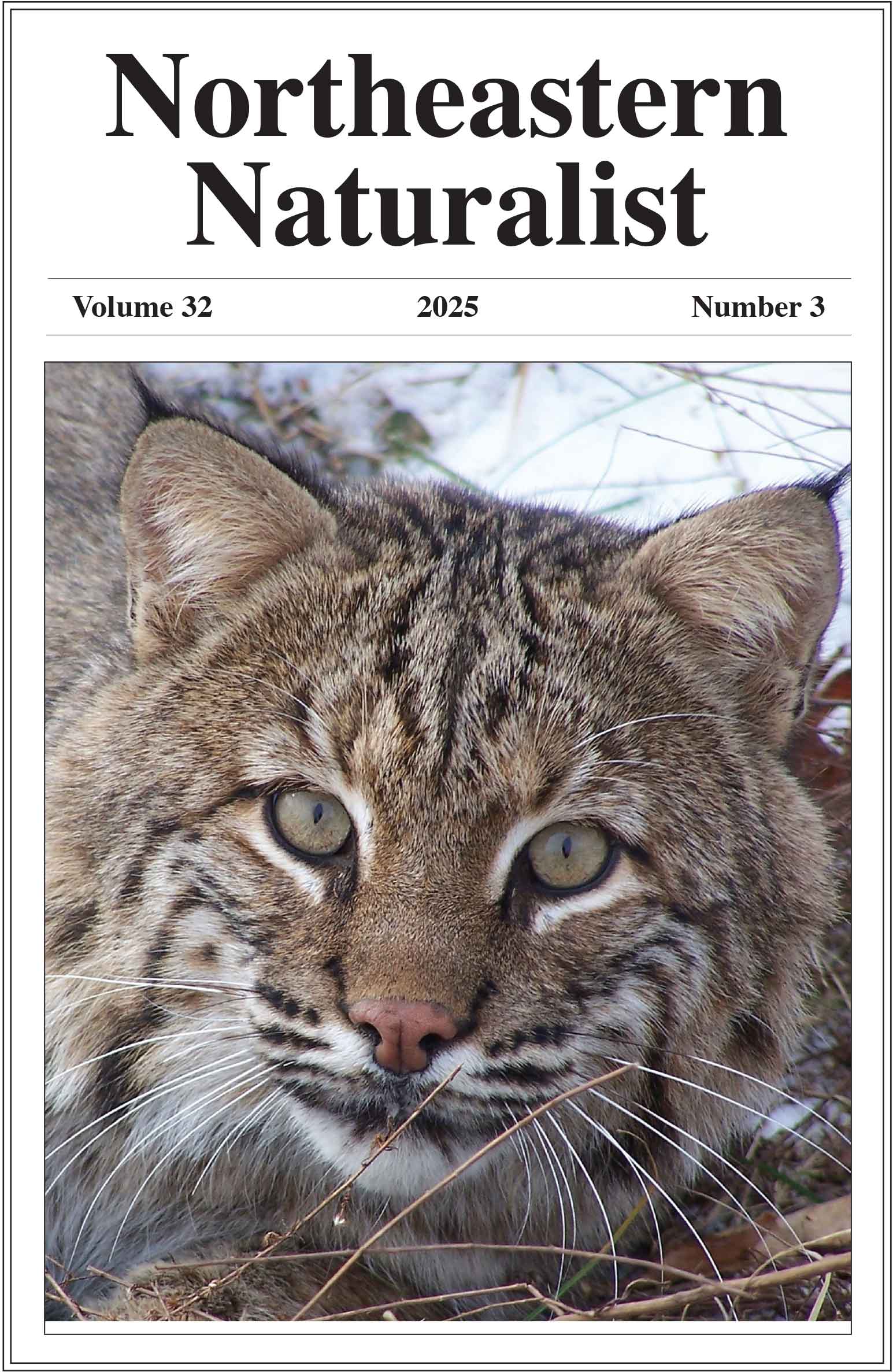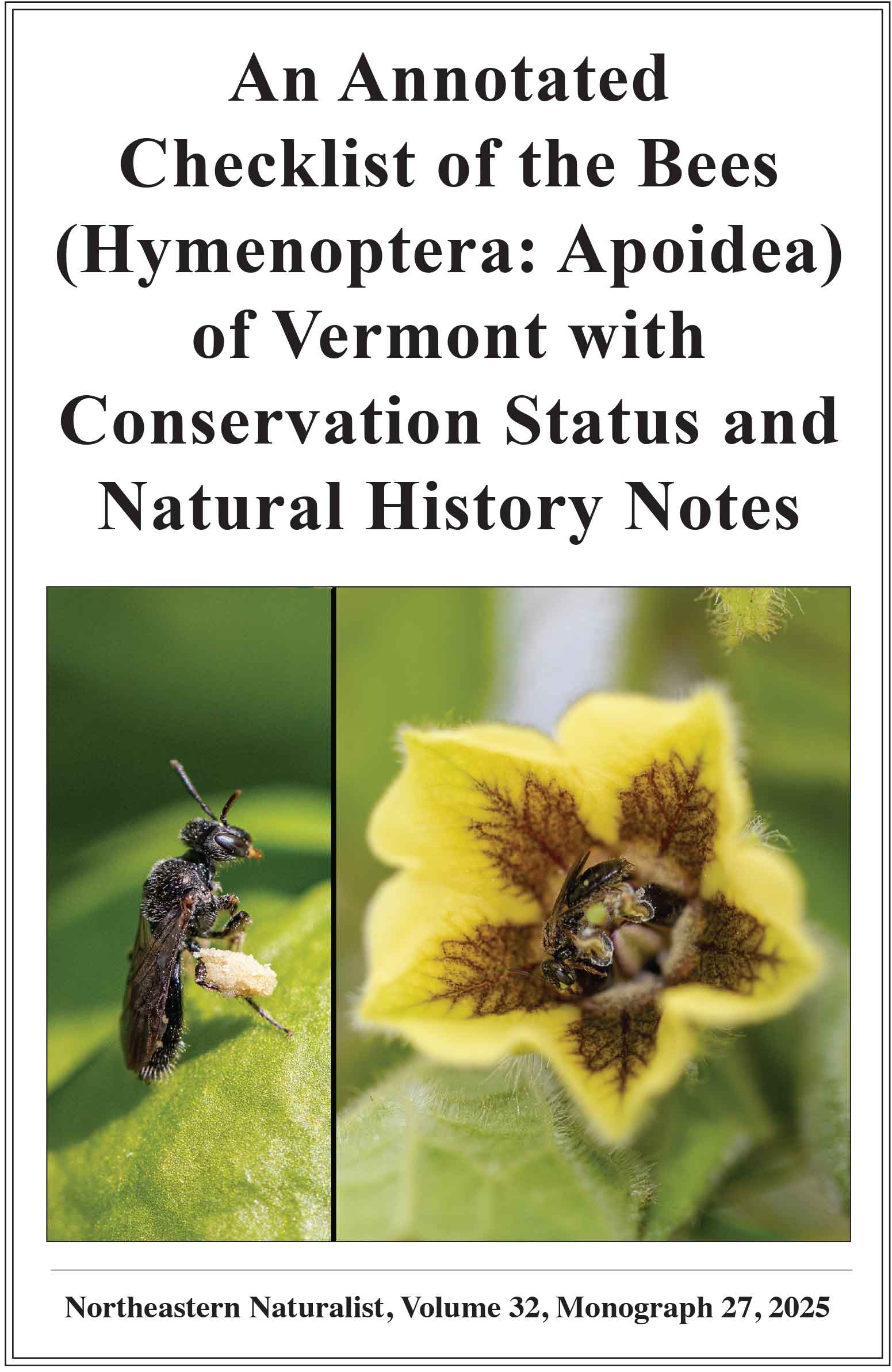Annual Relative Abundance Variability and Biological Characteristics of Age-0 Shortnose Sturgeon in the Lower Tidal Delaware River
Harold M. Brundage III1,* and Edward A. Hale2
1Environmental Research and Consulting, Inc., 325 Market Street, Lewes, DE 19958. 2University of Delaware, College of Earth, Ocean, and Environment, Delaware Sea Grant, School of Marine Science and Policy, 1044 College Drive, Lewes, DE 19958.*Corresponding author.
Northeastern Naturalist, Volume 32, Issue 2 (2025): 151–167
First published early online: 10 May 2025
Abstract
Little has been reported about the distribution and dispersion of age-0 Acipenser brevirostrum (Shortnose Sturgeon) in the Delaware River or elsewhere, with most of what is known about this life stage inferred from laboratory studies of hatchery-reared individuals. Here, we report on the collection of 156 age-0 Shortnose Sturgeon during relocation trawling performed in relation to rock blasting in the lower tidal Delaware River during the fall and/or winters of 2014 through 2020. Relative abundance, as represented by catch-per-unit-effort (CPUE) and the proportion of positive incident trawls (Ep), of age-0 Shortnose Sturgeon varied significantly among years, although no significant upward or downward trends in annual average CPUE or Ep were detected. The observed variation in abundance may reflect differences in the proportion of age-0 juveniles that dispersed from the spawning grounds to the lower tidal river each year, and/or annual differences in spawning success and early life-stage survival, which would affect the number of age-0 individuals available to disperse. We suspect that anoxic/hypoxic conditions in the Philadelphia–Camden reach of the river may have historically precluded movement of age-0 Shortnose Sturgeon to the lower tidal Delaware River and that seasonal hypoxia may continue to affect the timing and success of dispersal today. Results of this study suggest that the lower tidal Delaware River may now serve as an important rearing area for early juvenile Shortnose Sturgeon. Our observations provide new insights into the occurrence and dispersal of age-0 Shortnose Sturgeon in the tidal Delaware River, although data interpretation is constrained by the temporal and geographic limitations of the relocation trawling from which the data was derived.
![]() Download Full-text pdf (Accessible only to subscribers. To subscribe click here.)
Download Full-text pdf (Accessible only to subscribers. To subscribe click here.)
Access Journal Content
Open access browsing of table of contents and abstract pages. Full text pdfs available for download for subscribers.
Issue-in-Progress: Vol. 32(4) ... early view
Check out NENA's latest monograph and Special Issue:













 The Northeastern Naturalist is a peer-reviewed journal that covers all aspects of natural history within northeastern North America. We welcome research articles, summary review papers, and observational notes.
The Northeastern Naturalist is a peer-reviewed journal that covers all aspects of natural history within northeastern North America. We welcome research articles, summary review papers, and observational notes.